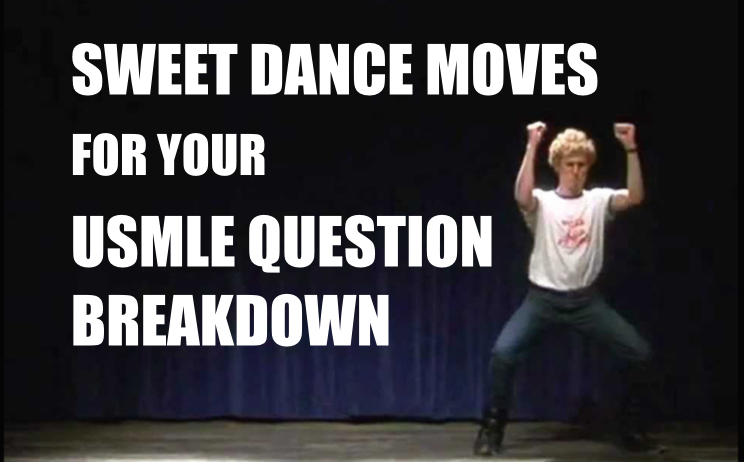
One of the best ways to be well-rounded in your USMLE prep is to maximize learning from your Qbank. By actively learning as much as possible from questions, you not only strengthen your fund of knowledge but also further hone your testing strategies over time.
As such, it’s our goal to help you further your USMLE prep through our blog by presenting you with the kind of detailed question breakdown you would experience in your work with one of our tutors. So, without further ado, let’s tackle a great example of a two-step USMLE Step 1 question:
One of the more important aspects of Step 1 and subsequent USMLE examinations is understanding principles of health maintenance. This is a great time for test makers to assess your knowledge as it pertains to disease screening and the outpatient management of common chronic diseases like hypertension or dyslipidemia.
The question below is a great example of how the USMLE can integrate biochemistry, pharmacology, and pathophysiology into one question on the management of dyslipidemia. It also highlights that students can take many paths to acheiving a correct answer and the utility of thinking through all answer choices.
A 47 year old male with a past medical history of hypertension and obesity presents to his primary care physician for routine physical examination and yearly laboratory studies. His labs are remarkable for total cholesterol 190, LDL 75, and HDL 25. The remainder of his labs and physical exam are unremarkable. In addition to lifestyle changes, his physician starts him on a new medication. Two weeks later the patient returns with new onset skin flushing. He denies any prior history of similar illness. His physician starts him on a second medication at this time and his symptoms improve. This second medication works by what mechanism of action?
E: Increased breakdown of dopamine
This question is a classic example of niacin-induced flushing, a common side effect and reason for noncompliance with niacin therapy. Niacin activates dermal Langerhans cells causing increased prostaglandin release and subsequent vasodilation. Aspirin is commonly given 30 minutes prior to niacin administration to prevent this side effect. Aspirin works by altering the activity of COX-2 to decrease prostaglandin release. Prostaglandin receptor antagonists like laropiprant have also been used.
But let’s break this down further…
This question is essentially asking which anti lipid medication can be used to raise HDL and has flushing as a side effect, and what is the mechanism of action for the drug used to prevent said side effect. (Again, this is a great example of a two-step question commonly seen on the USMLE Step 1.)
The first part of this question requires determining what medication the patient was started on. Here, this could be done through interpretation of the patient’s lipid profile (low HDL and normal total and LDL cholesterol) which could indicate treatment with niacin as this can increase HDL. This is further verified by the return visit for flushing, which as mentioned previously, is a common side effect of niacin.
The second part of this question can be solved several ways: One option would be to recall from memory that aspirin is commonly given to prevent cutaneous flushing with niacin and then select the answer that corresponds with aspirin’s mechanism of action (D). But what if you forget this information? In this case, by knowing the mechanism behind niacin-induced flushing (increased prostaglandin release), you can select the answer choice that would antagonize this mechanism. Finally, if all else fails, you can break down each answer choice to arrive at the correct option as follows:
Answer A Even without knowing that this represents the mechanism of niacin induced flushing, you should be able to eliminate this answer by recalling that prostaglandins cause vasodilation and would worsen flushing
Answer B Inhibition of cytochrome p450 can cause decreased metabolism of several drugs, resulting in many side effects. Neither niacin or prostaglandins are metabolized via p450 (and if they were, you would expect inhibition to worsen vasodilation)
Answer C Nitrous oxide also causes vasodilation; so decreasing NO breakdown would also lead to worsening of flushing
Answer E Dopamine is a neurotransmitter often involved in movement disorders such as Parkinson’s disease. It does not play a role in vasodilation.
This is a great example of how we can take several paths to the correct answer choice. Work through each question step at a time, and if you forget something along the way, don’t panic! Many questions on your USMLE Step 1 can be solved through trusting your gut and the process of elimination.





